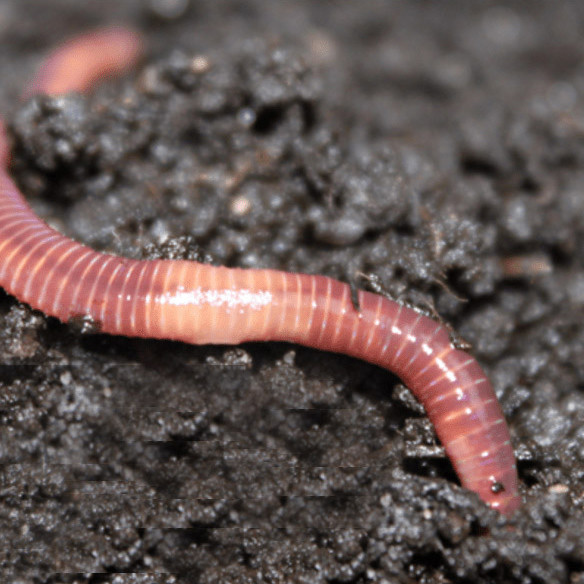Composting-friendly red wigglers: Learn their benefits
Composting-friendly red wigglers: Learn their benefits
Blog Article
Every Little Thing You Required to Learn About Red Wigglers for Composting
Red wigglers, or Eisenia fetida, play an essential function in the world of composting, changing natural waste into valuable dirt modifications. The process of setting up a worm container and keeping it can position obstacles.
What Are Red Wigglers?

(red wiggler composting worms)
Belonging To North America, red wigglers are surface-dwelling microorganisms that choose wet, warm environments abundant in decomposing raw material. Their diet is composed mostly of decaying plant material, food scraps, and various other organic particles, which they eat and damage down successfully. As they digest this product, they generate nutrient-rich spreadings that improve soil fertility.
Red wigglers are hermaphroditic, possessing both male and female reproductive body organs, and can recreate promptly under optimum problems. On the whole, red wigglers are important factors to the procedure of recycling organic waste into valuable compost.
Advantages of Making Use Of Red Wigglers
Utilizing red wigglers in composting systems provides many advantages that improve both the performance of waste management and the high quality of the resulting garden compost. These worms, medically known as Eisenia fetida, are especially effective at breaking down natural matter, transforming kitchen scraps and yard waste into nutrient-rich compost at a sped up price.
Among the key benefits of using red wigglers is their capability to take in huge amounts of natural product, typically refining their weight in food waste daily. This high usage rate causes much faster disintegration and lowers the quantity of waste sent out to landfills. The spreadings created by red wigglers are rich in vital nutrients, valuable bacteria, and enzymes, making them an outstanding plant food for gardens and plants.
Furthermore, red wigglers flourish in a variety of environments, making them adaptable for both indoor and outdoor composting systems - red wigglers. Their presence in a garden compost container assists to aerate the material, avoiding odors and advertising a healthy and balanced composting procedure. On the whole, utilizing red wigglers not only adds to reliable waste monitoring however also sustains lasting gardening methods with the manufacturing of top quality compost
(Where To Buy Worms In North Carolina)
Establishing Your Worm Bin
To successfully establish a worm bin, it is vital to pick an appropriate container that satisfies the requirements of red wigglers while supplying a helpful environment for composting. An appropriate bin can be made from plastic, timber, or steel, with a capacity of a minimum of 1 square foot for each pound of worms.
Make sure the container has appropriate water drainage openings to avoid excess moisture, as red wigglers thrive in a Extra resources damp, but not waterlogged, environment. red wigglers. The bin needs to additionally be ventilated to offer adequate air flow, avoiding anaerobic conditions that could harm the worms
An ideal location for the worm container is a cool, dark location, cost-free from straight sunshine and extreme temperatures, as red wigglers prefer a temperature level array of 55 to 77 levels Fahrenheit.
Before introducing the worms, prepare bedding products such as shredded paper, cardboard, or coconut coir, which will offer both habitat and food. Dampen the bed linen lightly to create an inviting atmosphere for the worms. Finally, take into consideration positioning a lid on the container to preserve humidity and reduce parasites, while guaranteeing it can be easily removed for upkeep.
Feeding and Care Standards
Feeding red wigglers is a critical element of maintaining a healthy and balanced composting system. These worms thrive on a diverse diet, mainly made up of organic products such as vegetables and fruit scraps, coffee grounds, and smashed eggshells. It is vital to avoid feeding them meat, milk, and oily foods, as these can develop unpleasant smells and attract pests.
When presenting food to your worm bin, slice or shred materials into smaller sized pieces to assist in quicker disintegration. Start with tiny amounts to assess the worms' usage rate, slowly boosting the quantity as they adjust. It is a good idea to alternate feeding places within the container to urge comprehensive blending and aeration of the compost.

Troubleshooting Common Issues
Preserving a flourishing worm composting system can in some cases present challenges that call for attention and troubleshooting. Typical issues include an unpleasant odor, which frequently indicates overfeeding or the visibility of anaerobic problems. To fix this, decrease the amount of food added and make certain correct aeration by mixing the bed linens material.
Another constant issue is the escape of worms from the container. This can occur as a result of excessive moisture or improper environmental conditions. Consistently examine the moisture degrees, aiming for a moist but not soaked consistency, and keep optimal temperature levels between 60-80 ° F(15-27 ° C )to create a comfy environment for your red wigglers.
Pests, such as fruit flies, can additionally get into worm bins. red wigglers. To battle this, cover food scraps with a layer of bed linen or shredded paper to hinder flies from laying eggs. Furthermore, ensure that any kind of food added is fresh and totally free from mold and mildew, which can attract undesirable insects
Last but not least, if your worms seem non-active, check for anxiety aspects such as temperature variations or poor moisture. Attending to these typical problems will certainly help keep a healthy and balanced and productive worm composting system.
Final Thought
In recap, red wigglers, or Eisenia fetida, play an important function in lasting waste management with vermicomposting. Their capacity to efficiently convert organic waste right into nutrient-dense castings boosts soil health and wellness and advertises plant development. Proper configuration and upkeep of a worm container, in addition to adherence to feeding guidelines, guarantee a successful ecosystem that reduces garbage dump payments. Resolving usual problems without delay even more sustains the performance of this environmental method, adding to ecological sustainability and farming productivity.
Report this page